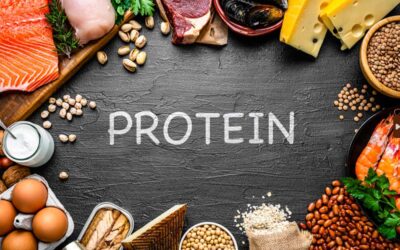The one constant in life is change. One might get a new job, have a baby, graduate or move to a different city. Even though changes can be exciting, they can also be stressful. My patients frequently ask for coping strategies to deal with the big changes in life. Here...
Expert Health Tips
Take advantage of their expertise in areas that interest you with our blogs, podcasts and health emails. And if you need a doctor, we can help with that too!
Recent Posts From Our Health Experts
Safe Sleep Practices for Newborns
Welcoming a baby into the world is a happy and exciting time! One of the most important aspects of caring for a baby is ensuring safe sleep. Infants typically sleep 16 to 18 hours a day, which is essential for their growth, development and overall health. Safe sleep...
Could an Ongoing Cough or Chest Cold Be Asthma?
I often see patients in my office who are dealing with a cough or chest cold that won’t go away or returns repeatedly. With these symptoms, I consider if my patient might have asthma.
Heart Rates: What’s Normal, What’s Not
As a cardiac electrophysiologist, my specialty is treating heart rhythm concerns. This could be a heart rate that is too slow, too fast or irregular. Let’s learn more about what your heart rate means and when to be concerned. What Does Your Heart Rate Measure and Why...
What Is Vertigo and How Is It Treated?
Imagine a sudden feeling of spinning when you first get out of bed that makes you feel like you’re on a carnival merry-go-round that won’t stop. You feel clammy, nauseous and out of control.
Making Waves: The Benefits of Aquatic Therapy for All Ages
Do you have aches and pains? Want to move easier? Interested in ways to improve your child’s strength and balance? Whatever goal you may have for yourself, your child or a family member, there are different ways aquatic therapy can help. What is Aquatic Therapy?...
10 Tips for Parenting with Love, Structure & Flexibility
Parenting is one of the most fulfilling yet demanding roles you can take on. Over the years, through my professional experience and my own journey as a parent, I’ve realized that perfection isn’t just unattainable—it can actually get in the way. Let me share a few...
Navigating Life with Migraines: My Journey and Insights
Have you ever felt a headache so overwhelming that it seemed to take over your entire day, leaving you desperate for relief? For me, migraines became an unwelcome companion during high school. Back then, I didn’t even know what to call them; I just knew that the...
Get the Protein You Need: How Much & What Kind Is Best for You
As a doctor, I get a lot of questions about how much protein we actually need. There is so much information available to us that finding the “right” answer can be hard. Protein is an important part of a well-balanced diet. However, getting the correct amount is just...
How to Lower Your Cholesterol
Do you have high cholesterol? Or have you been told to watch your cholesterol level? You might wonder what steps to take. Eat healthier, maybe more veggies? Exercise more? Limit calories? So many questions! I hope to help provide a little direction to help you. What...
Breast Cancer & Lymphedema
Lymphedema is a condition that occurs in one in five breast cancer patients. It might occur right after surgery or radiation therapy, or it might happen months or years later or not at all. If lymphedema is not treated, it can become debilitating and cause an...
Knee Pain & Surgery: How to Avoid It & When to Know It’s Time
If you’re experiencing knee pain, you might be wondering what you can do to avoid surgery and when surgery might be your best option. Here are answers to these common questions and information to help you determine next steps to resolve your knee pain. Knee Pain, Why?...
Tune in to…Bryan Health Radio
Want to know more about a health topic, or tips to stay well? Our 10-minute podcasts provide practical, useful advice for a lifetime of good health. And, they’re easy to listen to while you’re on the go, at work or at home. Get valuable health information from doctors and health experts. Listen to or download a free podcast today!
Stay Informed For Your Health
You and your family are unique. At Bryan Health, we have a variety of classes, events, podcasts and more for all stages of life.
To stay in the know, subscribe to our monthly For Your Health email!
Concerned About Health Symptoms, and Unsure What to Do? Use our Symptom Checker and find out.
Whether it’s a rash, your child’s ear pain or your aching back, our symptom checker can help determine what to do. Just answer a few questions about your symptoms and receive recommendations for care.
Care When You Need It
Getting sick or hurt is never convenient. From minor illnesses and injuries to serious health conditions, turn to Bryan. We provide the expertise and care you need. Choose from our online Bryan Health ezVisit to Bryan Urgent Care walk-in clinic to three emergency rooms ready to help you.













